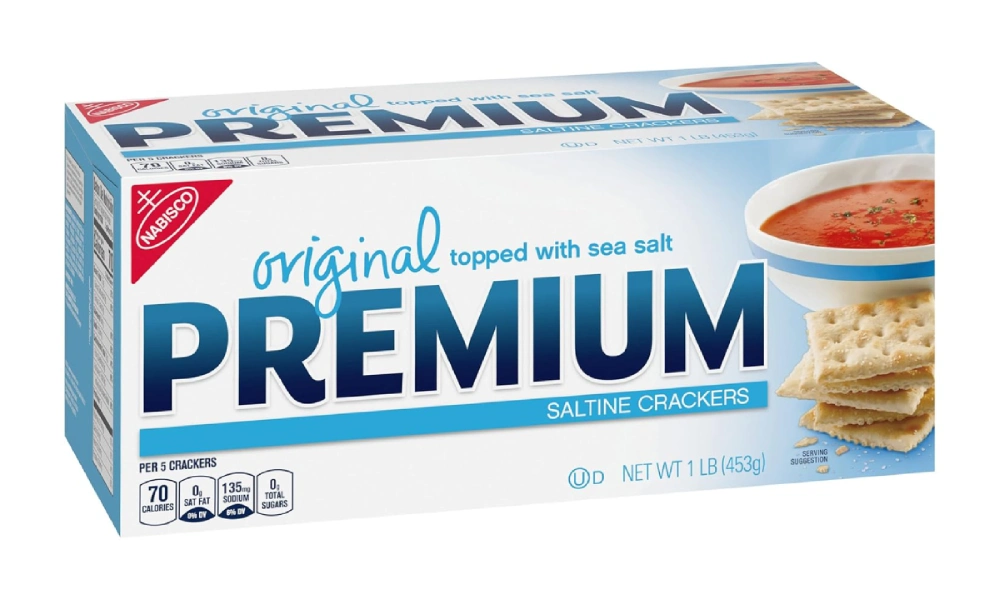Saltine crackers are renowned for their crisp texture and versatility. These crackers are commonly used as a crunchy addition to soups, a base for appetizers, and are often eaten for comfort during illness.
A common question among enthusiasts and consumers is, “Where are Saltine crackers made?” Let’s explore their production locations.
Saltine crackers are primarily produced in key locations in the United States, with notable manufacturing facilities in Missouri and Massachusetts. They are also made in Canada, the United Kingdom, Australia, and New Zealand, catering to a worldwide market.

The production of Saltine crackers has expanded across various regions to meet the global demand.
Saltine crackers have evolved from a local American snack to a globally recognized product within a short time.
Historical Background
The history of Saltine crackers is as rich as it is intriguing. Tracing back to the 19th century, these crackers were first introduced in the United States. The origin story often points to 1876, when F.L. Sommer & Company of St. Joseph, Missouri, began production.
However, the conceptual roots of Saltine crackers can be traced further back to a bakery in Newburyport, Massachusetts. Here, in the Josiah Bent Bakery, crackers were first made.
Josiah Bent, who ran a bakery in Newburyport, Massachusetts, is credited with naming these crackers. He called them “crackers” inspired by the crackling sound they made during baking.
These early crackers were a rudimentary version of the modern Saltine, primarily used by sailors and soldiers due to their long shelf life and ease of transport.
Over time, the recipe was refined, and salt was added, giving rise to the name “Saltine.” This evolution significantly shifted from an essential sustenance item to a popular snack.
Who makes Saltine crackers?
The primary manufacturer of Saltine crackers is Nabisco, a subsidiary of Mondelez International.
Additionally, Keebler, owned by the Kellogg Company, also produces its version of Saltine crackers. These two companies mainly manufacture Saltine crackers, making them widely available in various markets.
This diversity in production reflects the widespread appeal of Saltine crackers and their status as a pantry staple.
Nabisco and Keebler play a crucial role in maintaining the supply and popularity of Saltine crackers. Their production lines ensure this beloved snack continues to be a familiar and comforting presence across the country and beyond.
Who owns Saltine crackers?
Nabisco, a part of Mondelez International, owns the ‘Premium’ brand of Saltine crackers. This ownership ties the Saltine brand to a vast network of food products and distribution channels, ensuring its widespread availability and consistent quality.
This ownership ensures that Saltine crackers remain a staple snack in households that are cherished for their crisp texture and versatility.
Under Mondelēz International, Saltine crackers have continued their legacy, maintaining their classic taste and texture. This enduring ownership and brand evolution reflect the crackers’ steadfast popularity and role as a comforting, familiar snack in diverse culinary cultures worldwide.
Saltine crackers are a typical snack in many homes because of their plain but good taste. Mondelēz International, with its extensive network, helps ensure that people everywhere can buy and enjoy Saltine crackers.
Manufacturing process of Saltine crackers
The manufacturing process of Saltine crackers is a blend of traditional baking techniques and modern technology. It begins with mixing essential ingredients: flour, yeast, baking soda, and salt.
After that, this mixture is then kneaded into dough, ensuring a consistent texture. The dough is rolled out thinly and cut into distinctive cracker shapes.
Next, the crackers are docked, meaning small holes are pricked into them. This prevents the crackers from puffing up during baking. They are then lightly sprinkled with salt, giving them their characteristic flavor.
The crackers are baked precisely until they achieve their famous crispness and light golden color. After baking, the crackers are cooled and inspected for quality.
Only the ones that meet the high standards are selected for packaging. This careful process ensures that every box of Saltine crackers has the same quality and taste that consumers have come to love and expect.
The efficiency and precision of this process allow for the mass production of Saltine crackers necessary to meet the global demand for these popular crackers.
Conclusion
Saltine crackers have become a timeless snack, fitting for many occasions. They have come a long way from their origins. With their satisfying crunch and mild taste, they’ve found a place in countless homes.
As they continue to be produced and enjoyed worldwide, Saltine crackers stand as a testament to the enduring appeal of simple, well-made food products.